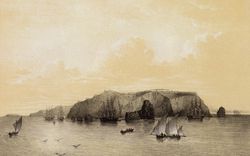Not (Only) Dead Skin
Samples from the Canadian House Dust Study
The Canadian House Dust Study,1 a research program by Health Canada, was conducted over four winters from 2007 to 2010 in thirteen cities with populations greater than one hundred thousand people, sampling a total of 1,025 individual houses. Studying airborne particles—dust—reveals how certain pollutants pass from their sources, via the environment, into the human body. House dust is a mix of fibres, paint, building materials, hair, mould, pollen, bacteria, viruses, insect parts, skin flakes, ash, soot, minerals, and other soil particles; its composition varies widely, depending on the age of a house, its architectural design and materials, its proximity to industrial or vehicular pollution, its methods of heating and cooking, its levels of temperature and humidity, its air exchange rates, and its climate. Equally important are the consumer choices and habits of the occupants. When compared to outdoor street dust samples, house dust collected from inside the average urban home showed higher concentrations of metals, including lead (Pb), mercury (Hg), arsenic (As), cadmium (Cd), copper (Cu), zinc (Zn), and antimony (Sb).
The following photomicrographs were collected by Michael Woldemichael, one of the researchers on the project.
-
The study was conducted by Pat E. Rasmussen (Principal Investigator), Michael Woldemichael and André Lalonde (mineralogy), Christine Levesque, Marc Chénier, and Monique Lanouette (sample preparation and chemical analysis), H. David Gardner (informatics), and Water and Earth Science Associates Inc. (recruitment and sampling). ↩
House characteristics (H07TB026)
Year home built: 1910
Total area of home: 102 m2
Number of stories: 2
Basement: yes
Setting: urban (suburb)
Floor types: carpet
Heating type: forced air (gas)
Renovations in past year: yes
Type of renovation: ripped out and renovated master bedroom and guest room
Read more
House characteristics (H07BA054)
Year home built: 1976
Total area of home: 167 m2
Number of stories: 2
Basement: yes
Setting: urban (suburb)
Floor types: vinyl, carpet
Heating type: fireplace (electric)
Renovations in past year: yes
Type of renovation: installed laminate floor in basement, painted all but two rooms, insulated crawl space
House characteristics (H07CA012)
Year home built: 1874
Total area of home: 204 m2
Number of stories: 2
Basement: yes
Setting: urban centre
Floor types: carpet, hardwood
Heating type: forced air (fuel)
Renovations in past year: yes
Type of renovation: painting and wall stripping
House characteristics (H07HM006)
Year home built: 1950
Total area of home: 93 m2
Number of stories: 1
Basement: yes
Setting: urban
Floor types: carpet
Heating type: forced air (gas)
Renovations in past year: yes
Type of renovation: painted whole house three years ago
House characteristics (H07SU026)
Year home built: 1953
Total area of home: 112 m2
Number of stories: 1
Basement: yes
Setting: urban (suburb)
Floor types: hardwood, carpet
Heating type: fireplace (gas), forced air (gas)
Renovations in past year: yes
Type of renovation: painted kitchen
House characteristics (H07BU055)
Year home built: 2001
Total area of home: 221 m2
Number of stories: 2
Basement: no
Setting: rural and urban (suburb)
Floor types: hardwood, carpet, other
Heating type: fireplace (gas), forced air (gas)
Renovations in past year: yes
Type of renovation: painted spare bedroom
Samples from the Canadian House Dust Study were exhibited in our 2011 exhibition Imperfect Health.















